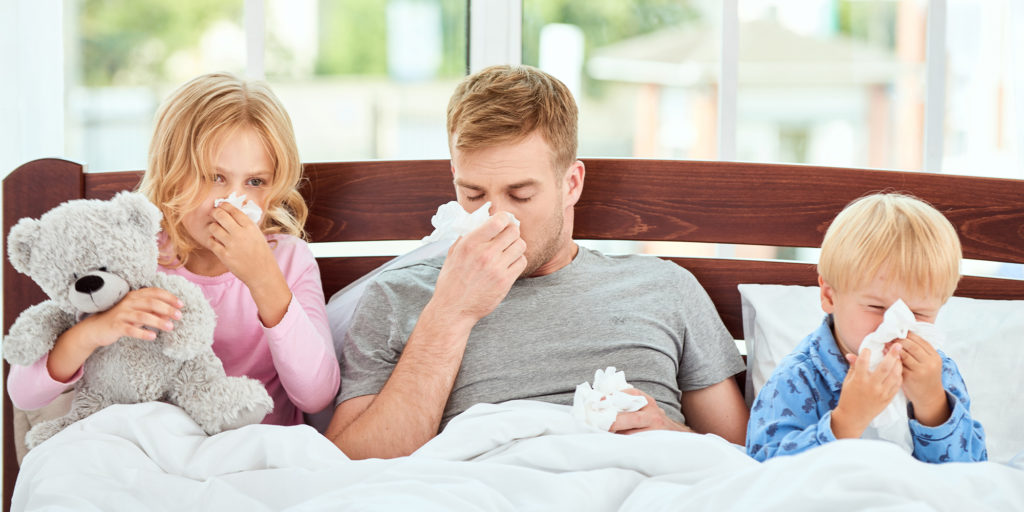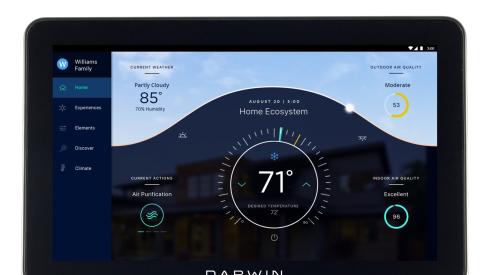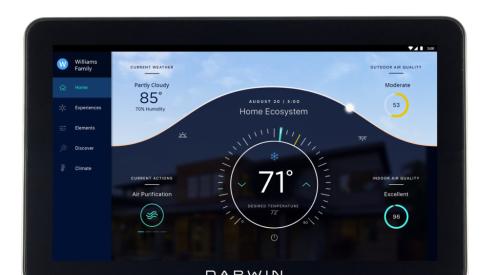Scientific Literature suggests the most unfavorable survival condition for microorganisms is when the relative humidity (RH) in a room is between 40% and 60%.1 How does this affect occupant health inside the home or workplace? In this article, we’ll look at how bacteria and viruses can live in indoor environments, a few ways to reduce them, and how to return indoor air quality to healthier levels.

The Humidity Factor
Low relative humidity (RH) of less than 40% is associated with three factors that can increase the potential for infections1:
1. Infectious aerosols emitted from a primary host (a person) shrink rapidly to become evaporated respiratory droplet nuclei. These dormant yet infectious aerosols can remain airborne for hours and can travel great distances.
2. Many viruses and bacteria are not moisture dependent and have increased viability in low RH conditions. When they encounter a hydrated secondary host (a person), aerosols can enter into the lungs, rehydrate, and then replicate the spread. Think of how the drying and wetting action of mold causes airborne spores.
3. Mucous membrane barriers are the body's most effective defense to aerosolized contaminants. But, it is now well known that ambient RH below 40% impairs mucous membrane barriers that line our nose, mouth and lungs, in addition to compromising other steps in our immune system protection.

Strategies to Minimize Virus and Bacteria Spread
In their paper, “Position Document on Infectious Aerosols,” ASHRAE calls for several strategies, including, but not limited to:
- Local exhaust ventilation for source control
- Temperature and humidity control
- Increased outdoor air exchange

Clean Indoor Air – As Easy As E-R-V
Installing an energy recovery ventilator like Panasonic’s Intelli-Balance 100, coupled with moisture-sensing bathroom fans addresses a multitude of problems in the home and helps reduce occupant exposure to viruses and bacteria. Here are ways an ERV ventilation strategy can help:
1. Airborne particulates are exhausted out and replaced with fresh, filtered air– reducing the viral load to the occupants. Predictable air exchange is the backbone of all ventilation strategies. Dilution!
2. The Intelli-Balance’s enthalpic core addresses humidity levels inside to outside, helping keep RH levels at or near optimal levels. This helps to prevent droplets from evaporating at low humidity levels and becoming droplet nuclei. Airborne droplet nuclei develop when the fluid of pathogenic droplets evaporates. These droplets nuclei are microscopic in size and weight and while affected by gravity, can remain airborne for several hours2.
3. Moist surfaces will keep viruses and bacteria alive for much longer periods. Having a live virus or bacteria on surfaces is a contact, transfer hazard. Moisture sensing fans in bathrooms can reduce or prevent intermittent, high-humidity loads from condensing on cool surfaces.
For builders, contractors, and homeowners looking for a cost effective, fresh air exchange strategy, the Intelli-Balance 100 is recognized by experts as the best value on the market. Panasonic’s uniquely designed capillary air exchange core and dual ECM motors allow for greater energy recovery in a more efficient package.
The ability to scale airflow to both design and desire makes it a natural strategy for good indoor air quality and healthier living in any climate.
Author
Ken Nelson - BPI Certified Building Analyst & Channel Sales Manager, Indoor Air Quality, Panasonic Life Solutions
Questions about ventilation strategies? Contact us below and an IAQ specialist will connect with you shortly.















